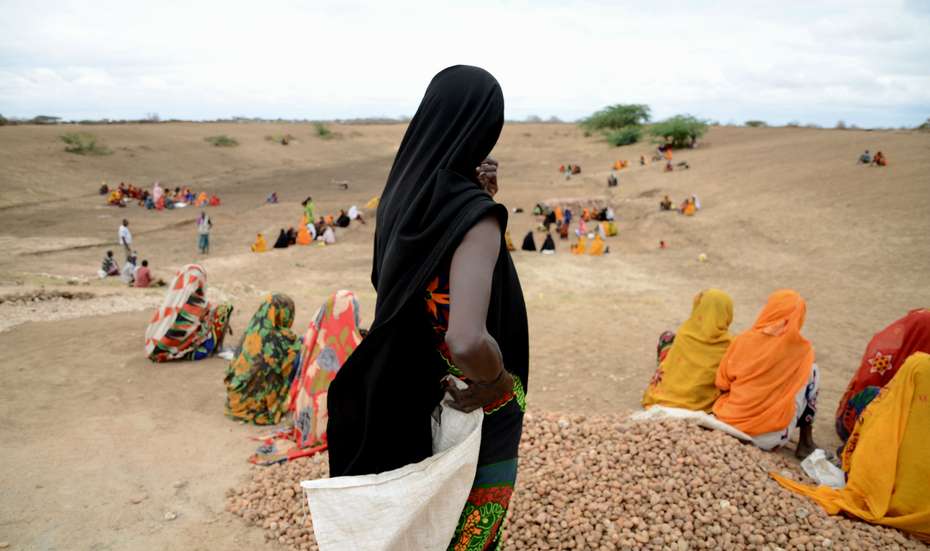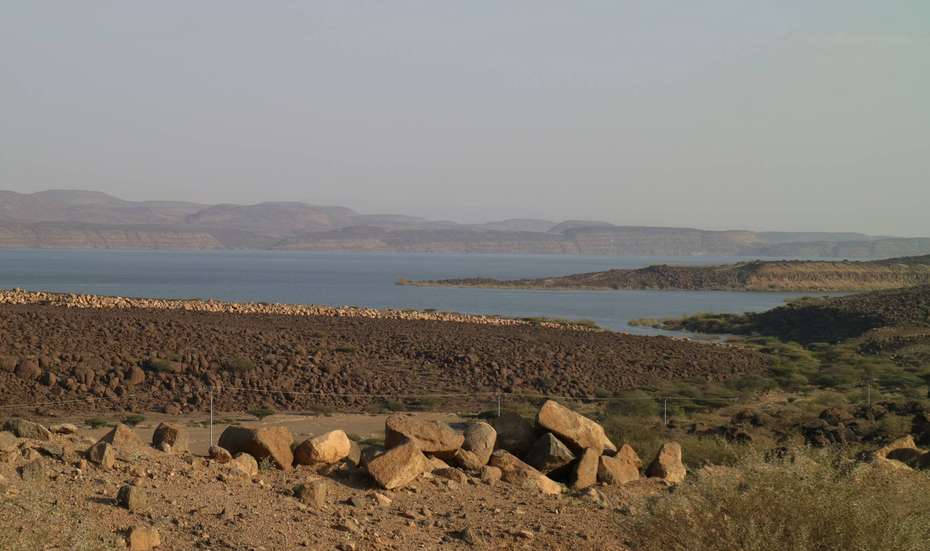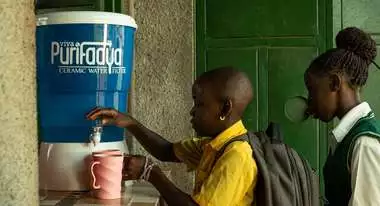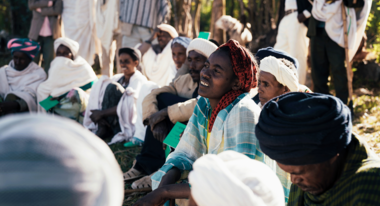The Effects of Climate Change on Migration in Rural Areas
A giant wave of migrants rolling towards Europe to escape the effects of climate change is rather unrealistic. But amongst the billions living in rural areas, small scale farmers are especially exposed to climate damage – even though they are already doing a lot to adapt.
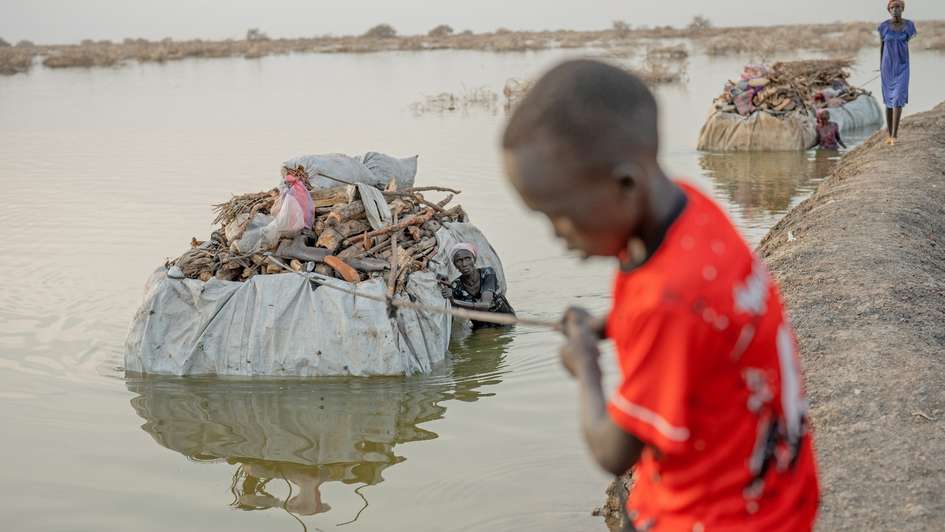
The effects of the climate crisis have long been abundantly clear in Germany as well. Heatwaves and droughts have become something of a new normal for Central European summers. Heavy downpours and the consequent flooding, sometimes with catastrophic results, are also becoming more frequent. However, many in the global North are not only concerned about the devastating consequences of the climate crisis due to the visible impact on their doorstep. There are also fears of a huge influx of "climate refugees" fleeing from Africa or parts of Asia towards Europe due to droughts, cyclones or water shortages.
Back in the 1990s, Oxford professor and expert on biodiversity Norman Myers predicted that the world could expect 200 million "climate refugees" by the middle of the 21st century. Since then, the fear of a climate-induced wave of mega-migration is mentioned again and again in the media. Corresponding headlines are, for example, "Climate Refugees – Millions Leaving their Homes" or "Is Climate Change Driving Entire Populations of the South to flee North?". Environmental and aid organizations have also frequently tended towards alarmist rhetoric on climate change and migration, speaking of a "Catastrophe Denied" in this context. Of course, this was done in order to campaign for more climate protection or better support for the countries of the global South. But what do we know about the connection between climate change and migration? And what significance does this connection have for rural areas?
"Climate migration": what we know
Since the 2000s, research on the topic of "climate migration" has intensified considerably. Numerous research projects and studies on the subject come to varied conclusions. Even in countries and regions that are already severely affected by the climate crisis, processes of migration and flight continue to be strongly influenced by non-ecological factors. In general, it is not just floods, droughts or other climate impacts, but in the vast majority of cases a combination of political, economic, social and environmental factors that have a significant impact on mobility decisions. Worldwide, armed conflicts are the leading cause of flight and displacement.
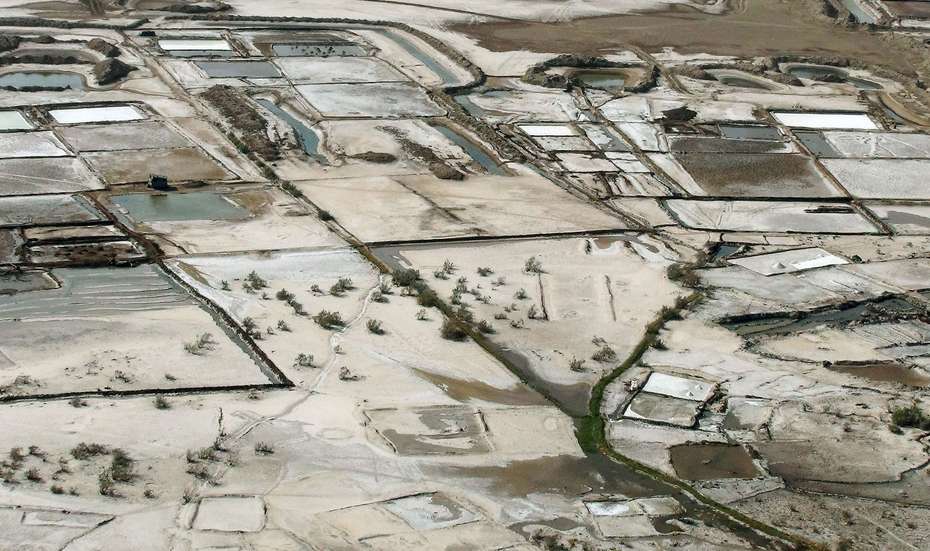
Moreover, displacement and migration in the context of climate change mainly take place within affected countries and regions. This is linked to the poverty of those most affected by the climate crisis in the global South. It is mainly smallholder families, nomadic livestock farmers and people who work in the informal sector in cities who suffer most directly from the consequences of global warming. These population groups generally lack financial and other means to migrate over long distances. For many, the only option is to migrate within the country or to move to a neighboring country. This does not usually take the form of permanent migration, but rather forms of circular migration dominate – migration that involves multiple moves between two or even several countries or regions. Seasonal migration – for example during dry seasons, when rain-fed agriculture is not possible in some agroecological zones – continues to be popular among smallholder farmers. If money is earned as a result of this migratory activity and this money is used to compensate for loss and damage caused by climate change, this can be regarded as a strategy of coping, or even of adaptation. Migration in the context of climate change has a potential for positive outcomes.
On the other hand, some of the people already struggling with the consequences of climate change do not have the means to migrate anywhere at all – not even to the next largest city. These people are therefore forced to be immobile and in many cases are exposed to greater climate impacts than those who are mobile. In some scientific literature, these are referred to as trapped populations.
Problems with terms, definitions and forecasts
It follows from these findings that a gigantic climate-induced wave of refugees heading for Europe or North America is an unrealistic prospect in the foreseeable future. The complexity of the effects of the climate crisis on mobility processes is a key reason why there is no generally accepted definition for terms such as "climate refugee" or "climate migration" – neither in a scientific, legal or political context.
Forecasts from the 1990s or 2000s about how many millions of people would have had to leave their homes by the middle of the 21st century due to climate impacts should no longer be used today due to their oversimplified assumptions. This includes not only the forecast by Norman Myers mentioned at the beginning, but also other calculations, some of which run into the billions.
Figures of the Internal Displacement Monitoring Center (IDMC) are more reliable. The IDMC regularly publishes figures and analyses on internal displacement worldwide. For several years, the IDMC has published figures on disaster-related displacement, although the disasters included – such as earthquakes – are clearly not all related to climate change. According to the IDMC, over 32 million people worldwide were displaced by disasters in 2022. These figures fluctuate considerably: in 2021, it was just under 24 million, in the previous year around 31 million. However, these are not official statistics, but rather estimates. In addition, many of those displaced by disasters return to their places of origin after a while.
Nowadays, there are new approaches to modeling migration in the context of climate change and generating corresponding forecasts. One example of such an approach are the World Bank's Groundswell reports, which were published in 2018 and 2021. The reports are based on a model that uses demographic, socio-economic and climate data for different regions of the world to calculate likely migratory movements within countries in the context of climate impacts. An important basis for this model was knowledge of the impact of climate on population distribution in the past.
In the worst-case climate and emissions scenario, the study arrives at a figure of 216 million people who would have to migrate in 2050 – notably, within their own country. In this scenario, sub-Saharan Africa (86 million), East Asia and the Pacific region (49 million) and South Asia (40 million) are particularly affected. However, this figure is not a prediction of the future. This is because the Groundswell model and other new models have weaknesses, such as the major problem of adequately taking account of sudden events such as wars of global significance in their calculations. In essence, these models create scenarios, i.e. illustrations of a possible or conceivable future reality, which are dependent on divergent, but basically possible development paths (such as the development of greenhouse gas emissions). Much remains vague.
Climate change, urbanization and rural populations
However, the consequences of the climate crisis – including migratory movements – will also affect rural areas in the future. The United Nations assumes that for the past 15 years or more, more people worldwide have been living in cities than in rural areas. This trend towards urbanization is set to continue in the coming decades. According to the United Nations, there will still be around three billion people living in rural areas by 2050, which at that time would still correspond to around a third of the world's population. A large proportion of the world's rural population will live in Least Developed Countries (LDCs). In contrast to the global trend and the various regions of the world, the rural population in the LDCs will actually continue to grow, at least in absolute terms. On the African continent in particular, growth in the rural population is likely to continue for some time.
It is clear that (smallholder) agriculture will continue to be of great importance for these people in the coming decades. However, agricultural production is particularly vulnerable to climate change and is already negatively affected to a significant extent. Global agricultural production is under enormous pressure to adapt and increase its resilience to the effects of climate change. Smallholder farming families, too, are already investing heavily: an estimated 368 billion US dollars are spent annually by smallholders around the world on climate adaptation measures.
In developing countries, the impacts of the climate crisis are not being felt by an amorphous mass of smallholder farming populations that are barely distinguishable from one another. On the contrary, there are substantial differences:
Many smallholders operate their farms as businesses and are often involved in non-agricultural activities in addition to commercial farming. They not only benefit from their proximity to urban markets and relatively good infrastructure, they are also able invest. Climate change creates both challenges and opportunities for this group.
Another group, smallholder farms “in transition”, are more dependent on non-agricultural activities and at the same time cultivate plots for their own use or grow additional products for the market. Access to markets and the uncertainties of local labor markets are decisive factors in deciding whether and to what extent they can commercialize their farms and adapt their production to climate change.
Subsistence-based smallholder families, agricultural workers and landless people are marginalized, especially as they often live in remote areas with limited agricultural potential.
"Climate migration" and rural areas: doing justice to the complexity
As already emphasized, there are no reliable statistics and forecasts. However, it can be assumed that the various (climate change-related) forms of mobility will have different effects on these different groups. Circular migration and its overall rather positive potential, for example, is particularly important for the second group, while the third, highly marginalized group is much more at risk than the other groups due to its enforced immobility. Displacement due to disasters, on the other hand, can also affect members of the first group. Overall, political decision-makers must do justice to the highly complex and, above all, highly diverse effects and interactions of the climate-mobility nexus. The objectives should be:
Preventing forced migration (as far as possible).
Promoting or strengthening the positive potential of migrationand
ensuring decent living conditions for migrants, their families and vulnerable or marginalized population groups in general.
These are huge tasks that can only be accomplished if different policy areas cooperate. The problems and challenges described here cannot be understood solely as tasks in the sectors of rural development and agriculture. Rather, this is a cross-sector challenge in the areas of environment, climate, urban development, migration, refugees and many more. However, this must go hand in hand with the basic understanding that migration is neither always a problem nor always a solution to a problem.

Dr. Benjamin Schraven in an advisor on flight and migration to, among others, the European Union, the United Nations and the International Organization for Migration (IOM). He is Associate Fellow of the German Institute of Development and Sustainability (IDOS) as well as the Center for Development Research at the University of Bonn.
